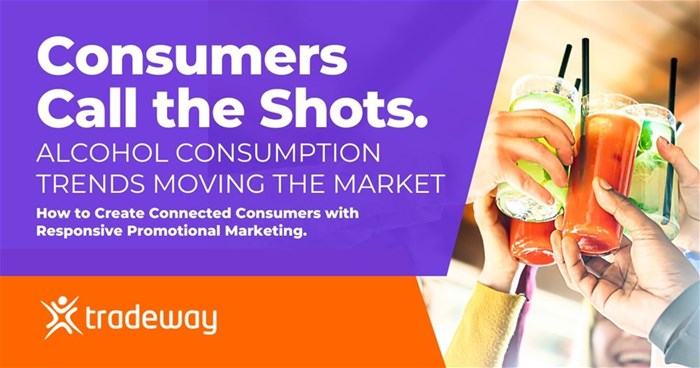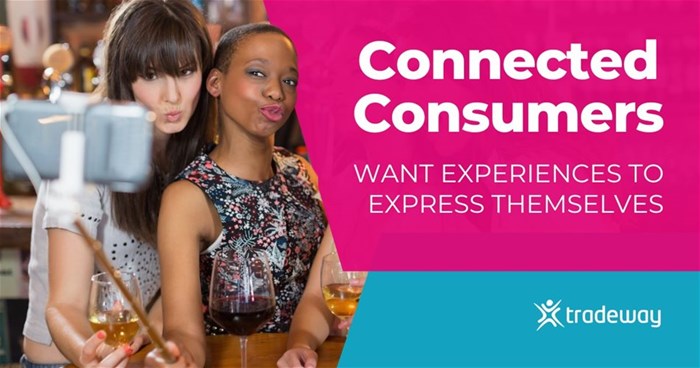Between flavour exploration, an explosion of local boutique brands, premiumisation, and health-conscious options, consumers of alcohol are spoilt for choice. Understanding what motivates consumers at point of sale - in-store, online or on-consumption - is key to building effective promotional marketing strategies in an increasingly competitive market. Leveraging the expertise of an experienced promotional agency can help you create experiences that resonate with consumer buyer behaviour to maximise market share and sales.
The state of trade: Booze is booming
Alcohol has proved resilient post the pandemic and despite a constrained economy. Diageo reported net sales growth of 10% in interim results for the last six months of 2022, driven by Johnnie Walker premium variants and Smirnoff. In their year to end-June, Distell reported that revenue had surpassed 2019’s pre-pandemic levels with revenue and volumes up by 24.4% and 18.7%, respectively. ABInBev also showed strong double-digit volume growth in 2021, with market share expansion in both beer and total alcohol versus pre-pandemic levels. Of course, there’s the low base that the pandemic and national restrictions resulted in but Statistica expects this upward trend to continue, forecasting annual market growth in alcohol of 8.5% for the next five years.
We all have that one friend whose bar is stocked
with alcohol for every occasion
– the hostess with the mostest...
Maijaliina Hansen-Chipps, marketing category lead for RTDs at Distell puts this down to the ‘lipstick effect’ that certain recession-proof ‘small luxury’ categories like alcohol enjoy. That, and post-pandemic consumers who are eager for connection, relaxation and real-world social experiences. It’s a sentiment echoed by Diageo’s finance chief Lavanya Chandrashekar, who told Reuters: “[i]n hard times, I think people just want that little moment to celebrate, to unwind with family, friends and colleagues”.
The life of the party
We all have that one friend whose bar is stocked with alcohol for every occasion – the hostess with the mostest – an influencer with a finger on the pulse of the industry, eager to try new brands and leverage the social currency they confer.
But brands looking to gain market share must appeal to everyone at the party – millions of consumers from the occasional drinker, to those who enjoy a glass of wine with dinner every night, to the upwardly mobile social drinker of premium brands, and the health and socially conscious drinker, and more.
The proliferation of choice on liquor store shelves we see today is a reflection of this diversified audience and is something we at Tradeway have experienced first-hand. We have seen the number of alcohol categories engaged in promotional marketing increase by 42% since 2019. A space once dominated by beer now extends to wines, spirits, liqueurs, and ciders. Craft breweries and distilleries are also looking to compete against the traditional players.
Spoilt for choice: Alcohol consumption consumer trends
1. The health-conscious drinker
The demands of increasingly health-conscious millennials are spilling over into the alcohol industry. Consumers want low-calorie, reduced sugar, low- and no-ABV options, and are exploring natural and ‘functional’ ingredients like adaptogenic mushrooms with claims of anti-inflammatory properties.
Manufactures must create reduced alcohol beverages that still great taste with minimal sugar, while masking the astringency of alcohol. To this end, flavour manufacturers are making use of innovative technologies and novel ingredients.
This is in part why we are also seeing flavour exploration on the shelves and in-hand. The challenge for marketers here is to both ensure that packaging and in-store promotion sells the benefits of these healthy variants, and to facilitate trials because, as much as we love novelty, we may need some convincing when it comes to parting company with hard earned rands.
“In-store sampling provides a great way for brands to introduce new flavours and healthy product lines, and to get direct feedback from consumers to guide future product line development and distribution,” says Andreas Smit, Business Development executive.
2. The connected consumer
Millennials are increasingly connected. When they are sharing experiences – whether in reality, or digitally, they want to be seen with brands whose aspirations and values reflect their own.
Premium and super-premium brands have become personal and aspirational identity statements for these consumers, especially in exclusive on-consumption venues.
To connect with these upwardly-mobile consumers requires a well-defined and clearly expressed brand identity that aligns with their values. It also requires showing up at the exclusive clubs, restaurants and venues they frequent. This presents brands with tangible opportunities to engage directly with a hyper-targeted, captive audience who will actively promote your brand as they seek to promote their own.
But the benefits of creating connected consumers extends beyond the socially-aspirant. Andreas argues that human-to-human engagement driven by deep conversation, understanding, and even imperfection is a basic human need that, when realised, results in emotionally connected and invested consumers. These are your brand loyalists. Harvard Business Review agrees – fully (emotionally) connected customers are 52% more valuable than highly satisfied ones (2013).
“Brands are generally pretty good at ensuring products are ‘satisfactory’”, says Andreas, “but this MVP (minimum viable product) is often mistaken as the end-goal. If we want long term sustainable relationships with our customers, we must do more than satisfy them, we must meaningfully and emotionally connect with them”.
Partnering with a promotions agency to create opportunities for meaningful emotional connection through sharable experiential events, for instance, is a great and genuine way to differentiate your brand in a marketplace that’s as crowded as the VIP section of the club.
3. The constrained customer
Consumers contending with the rising cost of living, increasing interest rates, petrol price hikes and inflation have less disposable income for discretionary goods like alcohol.
As a result, consumers are increasingly value-driven. According to a recent IWSR study, almost half of South Africans will wait for their preferred alcohol brand to be discounted before they buy it.
This presents brands with an opportunity to both secure market share and take it away from competing brands by leveraging value promotions. Promoting larger formats or bulk offers that deliver a lower price per litre can sway consumers at the point of purchase.
4. The convenience factor
Shopping for alcohol has never been more convenient for South African consumers. The channel has expanded with both digital and bricks-and-mortal outlets increasing, and then of course, there’s the post-Covid recovery in out-of-home venues like restaurants and bars.
Last year, liquor store growth outperformed retail sales growth. Checkers, Spar and Pick ‘n Pay all added 40–60 new liquor outlets in the last year alone. Spar’s Tops now number more than 730 stores, and Pick ‘n Pay has over 440 liquor outlets. It’s estimated that in 2023, 0.4% of total revenue will be generated through online sales and by 2027, 15% of revenue and 12% of volume will be attributable to out-of-home consumption.
An expanding channel means that brands must get granular in terms of target market buyer behaviour if they are to maximise return for marketing investment. Understanding when and how consumers engage with your brand should inform your route-to-market strategy. This is where a data-led approach to promotional marketing is key. Engaging with a promotions agency who understands local segmentation and tracks behaviour makes all the difference.
Creating connected consumers: Let’s mix things up!
Consumer priorities and buyer behaviour has changed. Health conscious, socially aspirant millennials are driving product diversification – from premiumisation, to no- and low-ABV options, to flavour exploration. All this product diversification and innovation means that shelves and bars are more crowded than ever before, with competitors all vying for diminished consumer attention.
The brands that tap into consumer trends and make a splash will win market share in the long run. This means marketers must be bolder, more innovative and more engaging in their marketing tactics. Brands looking to secure long term market share must ensure that they go beyond satisfying consumers, and create opportunities for meaningful, emotional connection.
Promotional marketing activities that are physical – allowing tasting, sharing, and the co-creation of viral content – is an important part of the marketing mix and goes a long way to creating connected consumers.
But execution can be complex. Equipping the right promoters with the right collateral in the right places requires specialist skill. Choose a reliable, data-led partner who knows what they are doing and guarantees results.
Tradeway is Africa’s largest independent BTL agency – a full-service, turnkey solution provider skilled in strategy, procurement, production, talent management and training, and warehousing and logistics. All underpinned by purpose-built, proprietary campaign management technology.
A technology- and data-driven consumer connection agency, we solve unique business challenges for the world’s leading consumer brands. Insights drive our strategies, and creativity and innovation bring them to life.
Contact us to learn more.



































